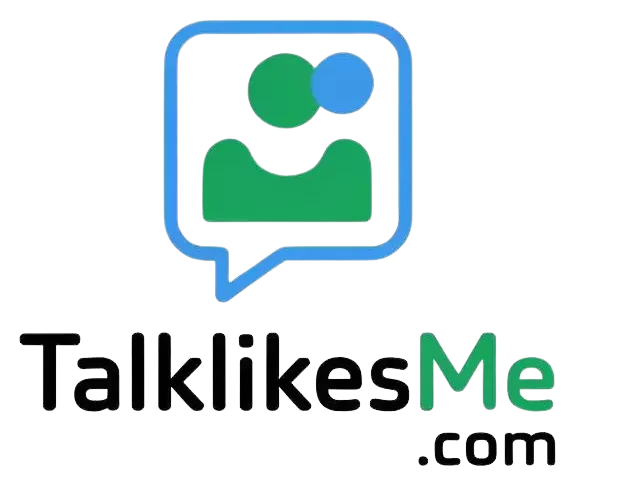I recall a time when I was explaining a new project idea to a colleague. I was excited and went into detail about every aspect.
Midway through my explanation, my colleague nodded and said, “Oh, I see.” It was a simple response, but it left me wondering if they truly understood or were just acknowledging my effort.
Since then, I’ve realized that “Oh, I see” can be both an acknowledgment and a conversation starter.
This phrase is often used when someone wants to show they’re following along without diving into the details.
1. Clarifying a Misunderstanding
When someone explains something you didn’t quite get before.
Example: “Oh, I see now. Thanks for clarifying that!”
When to use: When you understand the explanation and want to acknowledge it.
When not to use: If you still need further clarification or details.
2. Responding to New Information
When you’re given new information that changes your perspective.
Example: “Oh, I see what you mean now. That makes more sense!”
When to use: When you’ve just learned something new that clarifies a previous confusion.
When not to use: If you still find the information unclear and need more explanation.
3. When You’re Unsure
When someone explains something, and you’re not entirely sure you understand.
Example: “Oh, I see. I’ll need to think about that some more.”
When to use: When you need time to process the information fully.
When not to use: If you need immediate confirmation or further explanation.
4. During a Presentation
When a speaker gives you a detailed explanation, and you want to show you’re engaged.
Example: “Oh, I see how that fits into the overall strategy.”
When to use: When you want to show that you’re following along with the presentation.
When not to use: If you have questions or need additional details.
5. When Discussing a Plan
When someone explains a plan or idea to you.
Example: “Oh, I see the steps you’re proposing. That sounds good.”
When to use: When you understand the proposed plan and agree with it.
When not to use: If you disagree with the plan or have concerns.
6. Responding to a Story
When someone shares a personal story or experience.
Example: “Oh, I see what you went through. That sounds tough.”
When to use: When you understand and empathize with their experience.
When not to use: If you need more details or want to offer advice.
7. After a Detailed Explanation
When someone provides a thorough explanation on a complex topic.
Example: “Oh, I see the full picture now. Thanks for breaking it down.”
When to use: When you finally grasp the complexity of the topic.
When not to use: If you’re still unclear and need further clarification.
8. When Receiving Feedback
When someone gives you feedback on your work or performance.
Example: “Oh, I see the areas I need to improve on. Thanks for the feedback.”
When to use: When you understand the feedback and are ready to act on it.
When not to use: If you need additional examples or explanations of the feedback.
9. During a Technical Discussion
When discussing technical details or specifications.
Example: “Oh, I see the technical requirements now. That clarifies a lot.”
When to use: When you’ve understood the technical details being discussed.
When not to use: If you need more technical explanations or support.
10. When Learning a New Concept
When a new concept or idea is introduced to you.
Example: “Oh, I see how this new concept works. It’s quite interesting.”
When to use: When you grasp the new concept and find it engaging.
When not to use: If you’re still struggling to understand the concept.
11. Acknowledging a Joke
When someone makes a joke or a humorous comment.
Example: “Oh, I see the joke now. That’s funny!”
When to use: When you’ve understood the humor and want to show you appreciate it.
When not to use: If you didn’t get the joke or need it explained further.
12. During a Tutorial
When someone is teaching you how to do something.
Example: “Oh, I see how the process works now. Thanks for the guidance.”
When to use: When you’ve learned the process and are ready to apply it.
When not to use: If you need more practice or further instruction.
13. When Discussing Solutions
When brainstorming solutions to a problem.
Example: “Oh, I see how this solution addresses the issue.”
When to use: When you understand how the proposed solution works.
When not to use: If you need more information on how the solution will be implemented.
14. Responding to a Proposal
When reviewing a proposal or suggestion.
Example: “Oh, I see the benefits of this proposal. Let’s discuss it further.”
When to use: When you understand the proposal and see its value.
When not to use: If you have reservations or need more details.
15. When Talking About Future Plans
When someone outlines future plans or goals.
Example: “Oh, I see the direction you’re aiming for. That sounds promising.”
When to use: When you understand and are supportive of the future plans.
When not to use: If you have concerns or need more information about the plans.
16. After Receiving Instructions
When someone gives you instructions on how to perform a task.
Example: “Oh, I see the steps now. I’ll get started on it.”
When to use: When you’ve understood the instructions and are ready to proceed.
When not to use: If you need further clarification on any step.
17. When Discussing Preferences
When someone explains their preferences or choices.
Example: “Oh, I see why you prefer that option. It makes sense.”
When to use: When you understand their reasoning and agree with their preferences.
When not to use: If you need more information or have differing preferences.
18. During a Debate
When participating in a debate or argument.
Example: “Oh, I see your point. I hadn’t considered that angle.”
When to use: When you understand and acknowledge the other person’s perspective.
When not to use: If you want to continue debating or need to present a counterpoint.
19. After Learning About a Change
When informed about changes in plans or policies.
Example: “Oh, I see how the new policy will impact us.”
When to use: When you understand the implications of the change.
When not to use: If you need more details about the change or its effects.
20. Responding to Personal Updates
When someone shares personal updates or news with you.
Example: “Oh, I see what’s been happening. Thanks for sharing.”
When to use: When you’ve understood their update and want to acknowledge it.
When not to use: If you need more details or want to offer support.
21. When Discussing Cultural Differences
When someone explains cultural practices or beliefs.
Example: “Oh, I see how that cultural aspect influences behavior.”
When to use: When you understand and appreciate the cultural context.
When not to use: If you want to learn more about the cultural practices.
22. Responding to an Invitation
When receiving an invitation or event details.
Example: “Oh, I see the date and time. I’ll check my schedule.”
When to use: When you’ve noted the details and will respond accordingly.
When not to use: If you need more information about the event.
23. After a Technical Explanation
When someone explains a technical process or detail.
Example: “Oh, I see how that technology works now. Thanks for explaining.”
When to use: When you understand the technical explanation and its application.
When not to use: If you need more technical details or hands-on practice.
24. When Receiving a Suggestion
When someone offers a suggestion or idea.
Example: “Oh, I see how that suggestion could improve things.”
When to use: When you understand the suggestion and see its potential benefits.
When not to use: If you need to discuss the suggestion further or have doubts.
25. During a Customer Service Interaction
When interacting with customer service and receiving an explanation.
Example: “Oh, I see the resolution now. Thank you for your help.”
When to use: When you understand the solution provided by customer service.
When not to use: If you need further assistance or have additional questions.
26. When Hearing a New Perspective
When someone provides a fresh perspective on a familiar topic.
Example: “Oh, I see the topic from a different angle now. Interesting.”
When to use: When you’ve gained a new understanding or perspective.
When not to use: If you want to delve deeper into the new perspective.
27. After Reading a Report
When reading a detailed report or analysis.
Example: “Oh, I see the key findings from the report. It’s very informative.”
When to use: When you’ve understood the main points and conclusions of the report.
When not to use: If you need to discuss the report further or ask questions.
28. When Discussing Research Findings
When discussing findings from research or studies.
Example: “Oh, I see how the findings support the hypothesis.”
When to use: When you understand and acknowledge the research results.
When not to use: If you need to analyze the findings in more detail.
29. Responding to Career Advice
When receiving advice about career development or job opportunities.
Example: “Oh, I see the career path you’re suggesting. I’ll consider it.”
When to use: When you understand the advice and are open to considering it.
When not to use: If you need more details or have questions about the advice.
30. During a Budget Discussion
When discussing budget allocations or financial plans.
Example: “Oh, I see how the budget is allocated. That makes sense now.”
When to use: When you understand the budget details and their implications.
When not to use: If you need to discuss or adjust the budget further.
Top Editor Choice Responses
- “Oh, I see where you’re coming from. That clarifies things.”
- “Thanks for the explanation; oh, I see how it fits now.”
- “Oh, I see your point. It’s starting to make more sense.”
- “I understand now, oh, I see the bigger picture.”
- “Oh, I see how this works. It’s quite insightful.”
- “Oh, I see what you mean now. That’s really helpful.”
- “Got it, oh, I see the connection you’re making.”
- “Oh, I see the rationale behind that decision.”
- “Oh, I see the impact of that change now. Thanks!”
- “I see the details more clearly now, oh, that’s useful.”



